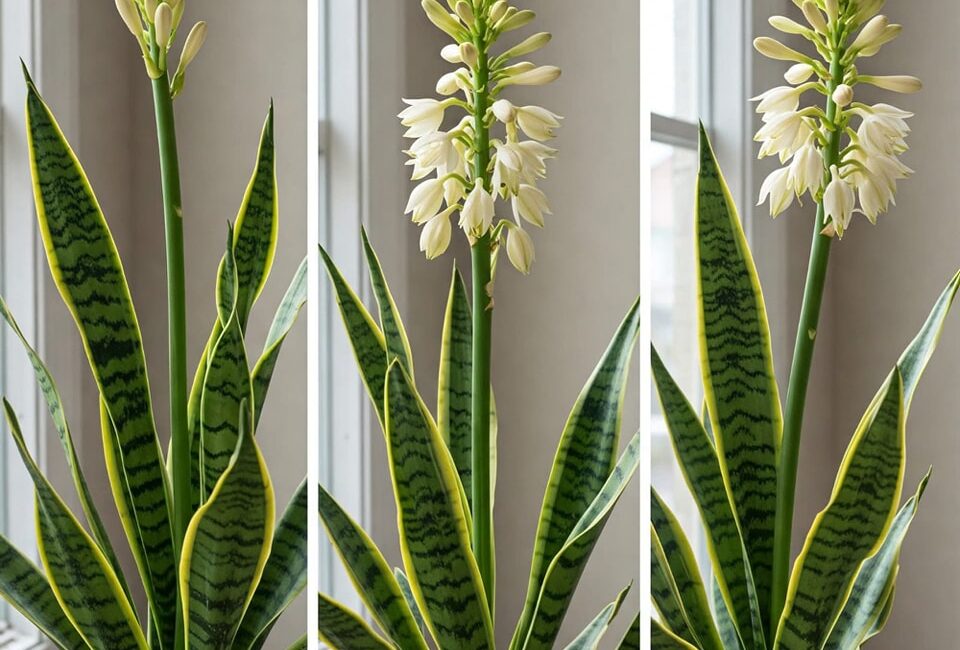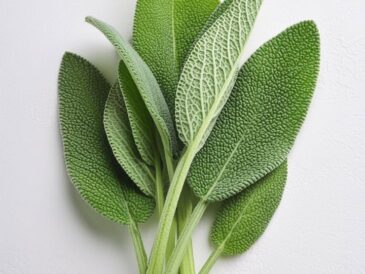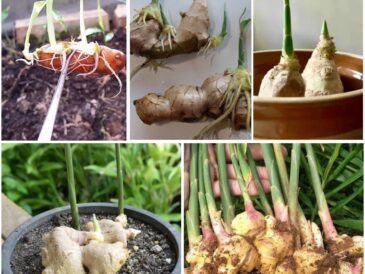Introduction
Snake plants, scientifically known as Dracaena trifasciata (formerly Sansevieria), have long been favored by houseplant enthusiasts for their hardy nature, architectural beauty, and air-purifying qualities. Characterized by their tall, sword-like, upright leaves, snake plants are often prized for their low-maintenance lifestyle rather than their flowers. While blooming is rare in indoor conditions, when snake plants do flower, they produce clusters of delicate, fragrant, creamy-white to pale greenish flowers that captivate and delight gardeners.
But what if you could encourage your snake plant to bloom more often and more spectacularly? This article explores the surprising natural ingredients, methods, and care practices that can trigger your snake plant to flower like never before. From soil amendments and fertilization to environmental factors and unexpected natural boosters, we’ll explore the science and lore behind blooming snake plants.
Understanding the Snake Plant and Its Blooming Habits
1. What is a Snake Plant?
The snake plant is a succulent-like perennial native to West Africa, well-adapted to survive harsh, arid environments. Its tough, fleshy leaves store water, allowing it to withstand neglect, drought, and low light conditions that would kill many other plants. This durability makes it a top choice for indoor spaces, offices, and even beginners in gardening.
2. Why Are Snake Plant Flowers So Rare?
Snake plants prioritize leaf growth and survival over flowering, especially indoors. Flowering is an energy-intensive process, often triggered by environmental cues or maturity in the plant’s life cycle.
In nature, snake plants flower seasonally, usually in spring or summer, when conditions are optimal—ample sunlight, stable temperature, and enough moisture. Indoor plants often don’t receive the right signals, or their growth is limited by pot size, light, or nutrition.
When flowers do appear, they typically bloom from a tall stalk arising from the base of the plant, producing a cluster of tubular, sweetly fragrant flowers that last several days. The blooming event is not only beautiful but can indicate a healthy, mature plant.
Key Factors Influencing Snake Plant Blooming
Before diving into specific ingredients, it’s important to understand what environmental and physiological factors influence flowering:
- Plant Maturity: Snake plants may take 2-3 years before flowering is possible.
- Light Exposure: Bright, indirect sunlight mimics natural conditions and encourages blooming.
- Watering Regimen: Moderate watering and allowing soil to dry out prevent root rot while supporting flowering.
- Temperature: Warm temperatures around 70-85°F (21-29°C) favor blooming.
- Pot Size & Root Space: Slightly root-bound plants often flower more readily than those in oversized pots.
- Nutrient Availability: Balanced fertilization supports healthy growth and flowering.
Surprising Ingredients to Make Your Snake Plant Bloom
1. Bone Meal — Phosphorus-Rich Powerhouse
Why It Works:
Bone meal is a natural fertilizer high in phosphorus, the mineral most associated with flower development and root growth. Phosphorus stimulates the plant’s ability to produce blooms by supporting energy transfer and cellular division in flower buds.
How to Use:
Mix 1-2 tablespoons of bone meal into the potting soil or sprinkle lightly on the soil surface before watering. Apply once in early spring and again mid-season for best results.
Scientific Backing:
Phosphorus is an essential nutrient in ATP (adenosine triphosphate), critical for flowering and fruiting. Without adequate phosphorus, plants produce lush leaves but few or no flowers.
2. Epsom Salt — Magnesium Boost for Vigor
Why It Works:
Magnesium is a vital component of chlorophyll and enzyme systems in plants. Epsom salt, chemically magnesium sulfate, improves chlorophyll production, enhancing photosynthesis and overall plant health. A healthy plant is more likely to bloom.
How to Use:
Dissolve 1 tablespoon of Epsom salt in 1 gallon of water and use it as a foliar spray or soil drench once a month during the growing season.
Scientific Backing:
Magnesium deficiency can cause chlorosis (yellowing) and poor growth, limiting the plant’s capacity to produce flowers. Supplementing magnesium ensures that the plant’s metabolic systems run smoothly.
3. Cinnamon — Natural Root Stimulator and Antifungal Agent
Why It Works:
Cinnamon is more than a spice; it’s a natural antifungal and root stimulant. When mixed lightly into the soil or applied to cut stems, cinnamon can promote healthy root growth and prevent infections that might otherwise stress the plant, limiting flowering potential.
How to Use:
Sprinkle a thin layer of cinnamon powder on the soil surface or dust it onto any cuts or root-pruned areas.
Scientific Backing:
Studies have demonstrated cinnamon’s antifungal properties can reduce damping-off disease in seedlings and improve root development, indirectly promoting healthier plant growth and flowering.
4. Compost Tea — Nutrient-Rich Organic Elixir
Why It Works:
Compost tea is a liquid solution brewed from well-aged compost, packed with beneficial microbes, nutrients, and organic matter. It boosts soil life, improves nutrient availability, and promotes vibrant plant growth including flowers.
Click page 2 for more




